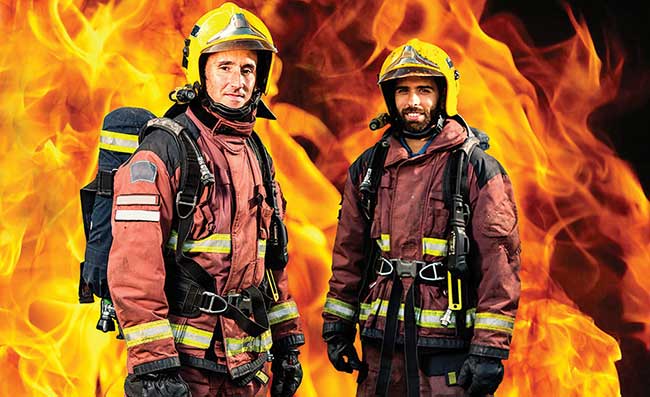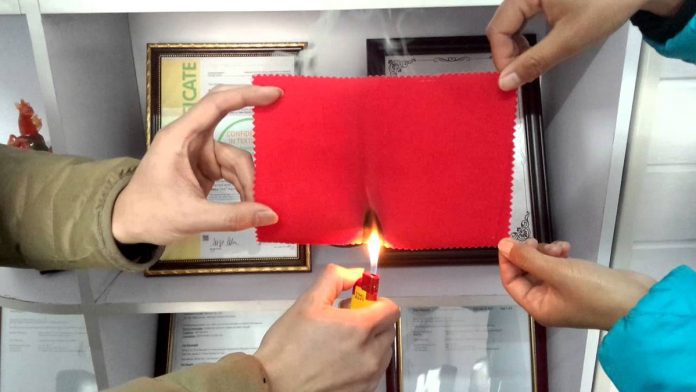Table of Contents
Bespoke by Evans supplies a variety of inherently flame-retardant cloths acceptable for a huge array of commercial environments such as health care, hospitality, and education industries. Each cloth substantially decreases the danger of injury and fire. The movie below, courtesy of Vision, reveals why FR fabrics and fabrics are necessary within public surroundings.
All you Want to know about flame retardant fabric
Ensuring your curtains and curtains are flame retardant is essential for all sorts of spaces, while it is a theater, church or village hall. Some fabrics are somewhat more resistant to flames others, so the ones which are more flammable could be medicated to burn, reducing fire hazards and adhering to safety criteria.
- IFR- Inherently Flame Retardant describes fabrics that are woven using naturally fire-resistant fibers and fulfill the flame criteria without needing to be treated with different substances.
- DFR- Durable Flame Retardant implies the cloth was manufactured with a fire retardant complete and will withstand a range of cleanings until it has to be hauled to conform to British Standards. But should they come in contact with the liquid that the substance will have to be medicated to meet flammability requirements?
- CBFR- Could Be Produced Fire Retardant signals that the fabric now is not flame retardant, but it may be treated to meat public spaces regulations and eventually become DFR or NDFR.
- CNFR- Could not Be Produced Fire Retardant suggests the cloth, such as metallic or specific synthetic fabrics, can not be medicated to adhere to the British Standards and consequently should not be utilized in public places.
Flame-Resistant Fabric Manufacturers
When buying curtains for your place, it’s essential that you make sure the Flame Resistant Fabric was treated to conform to the British Standards of BS 5867 and get the certificate to show this. There are two distinct components to the Standard that match different environments and applications. You can check out their services.
Also Read: Master Bedroom Interior Design Reviews
Sort B The cloth is put on a metal framework and fire is applied to the surface for 15 minutes prior to and after cleansing. The cloth moves the test if: The fire does not achieve any borders of the cloth, BS 5867 Part 2: Form C is the code to get drapes suspended in hospitals and health care environments. The cloth is tested before and after cleansing, for example, 50 cycles of washing. It is suspended on a metal frame and Fire Resistant Fabric is applied to the cloth surface for 5 minutes, 15, 20 and 30 minutes.
Workwear Fabric Tests
The cloth then passes the test should: Both after flame and afterglow do not exceed 2.5 seconds, The fire does not achieve any borders of the cloth, Business owners of hospitality, health care, and other businesses have a duty of care to guarantee everything in their power is done in order to decrease the possibility of fire and enhance the security of the guests, residents and staff alike.
The UK standard for fire retardancy is BS5867, Part 2B usually means an item may be washed 12 times and passes the fire-retardant evaluation, while Part 2C pertains to fire-retardant cloths; these may be cleaned as much as 50 times and are still fire-resistant. Unawareness or prevention of this flame-retardant supplying regulations can have catastrophic consequences.

Fire-Resistant Fabric Suppliers
A shocking and repulsive reminder of the devastation poisonous fire could have on insufficient materials is that the catastrophe of Grenfell Tower. The rate where the flame engulfed the building, the tiny probability of escape to the more vulnerable being confused or not as nimble. This can be a stark reminder to pick the Protective fabrics. An easy change to fire-retardant British Conventional certified fabrics will decrease fire danger in almost any surroundings.
All Bespoke from Evans fire retardant clothes are designed and printed inside the united kingdom and may be used for bedding, drapes, and seat. No clothes are forever fire-resistant, but sure chemical structures imply some are more fire retardant than many others. Some artificial fibers, such as certain polyesters, are proven to be flame retardant than other substances.
Which Protective Fabrics Material is Used
They’re slow to ignite, but as soon as they’ve ignited they melt as opposed to burning which may result in severe burns. Natural fibers of silk and wool are regarded as more immune to flames over linen and cotton since they are equally difficult to spark and fires are usually extinguished from the fibers.
The untreated all-natural fibers in linen and cotton are fast to spark, and the flames spread faster than other materials. Textiles that contain both organic and synthetic fibers may be toxic if they ignite because they blend the speedy spread of fires of organic fibers together with the melting feature of these synthetic fibers.
The weight and weave of this cloth will also impact the ignition and burn off time of this cloth. Lightweight stuff will burn faster than thicker fabrics, whilst textured fabrics like velvet will spark more readily than those using a sleek surface. To learn more or to talk to the staff about your needs, do get in contact with the team today through our contacts page.















